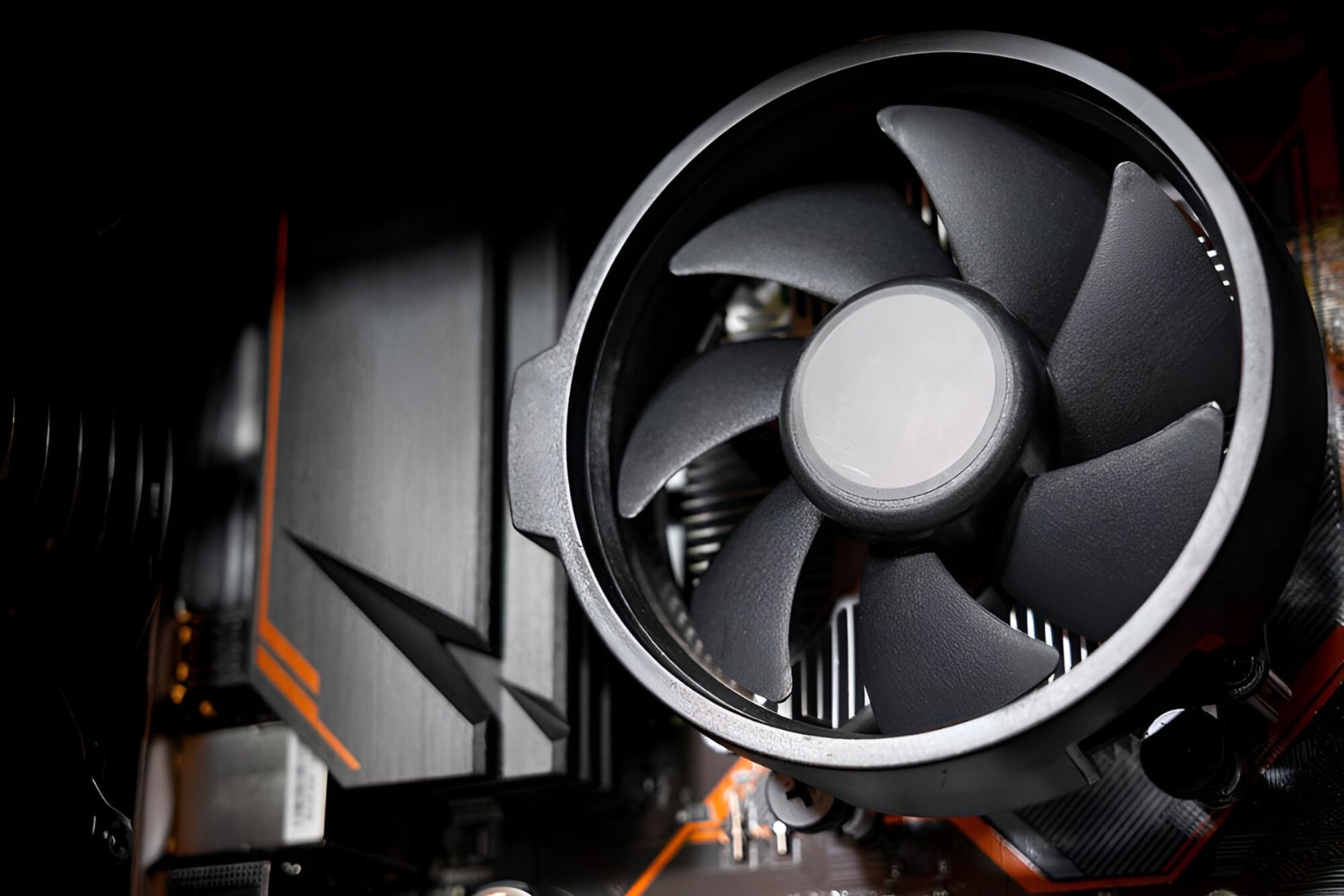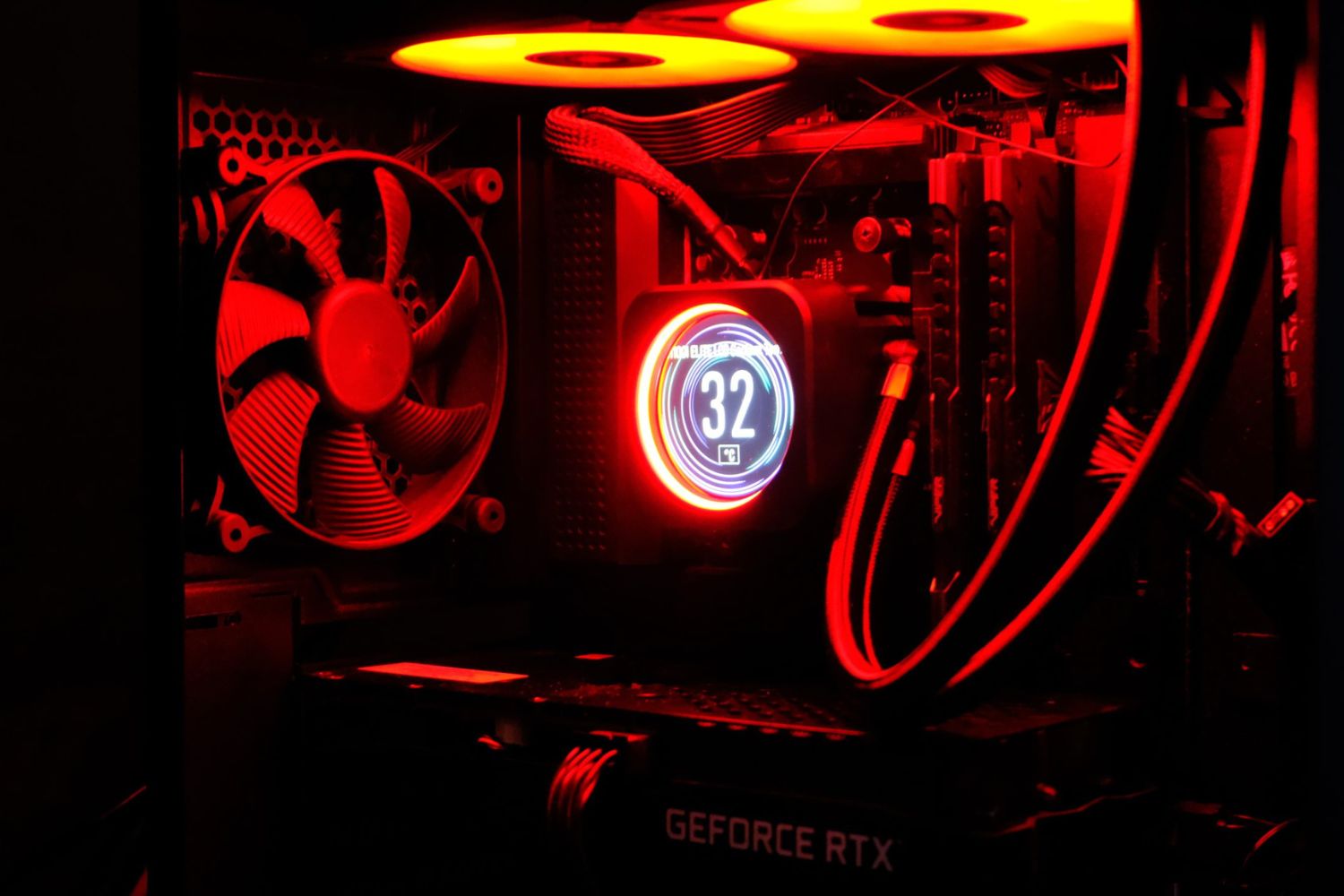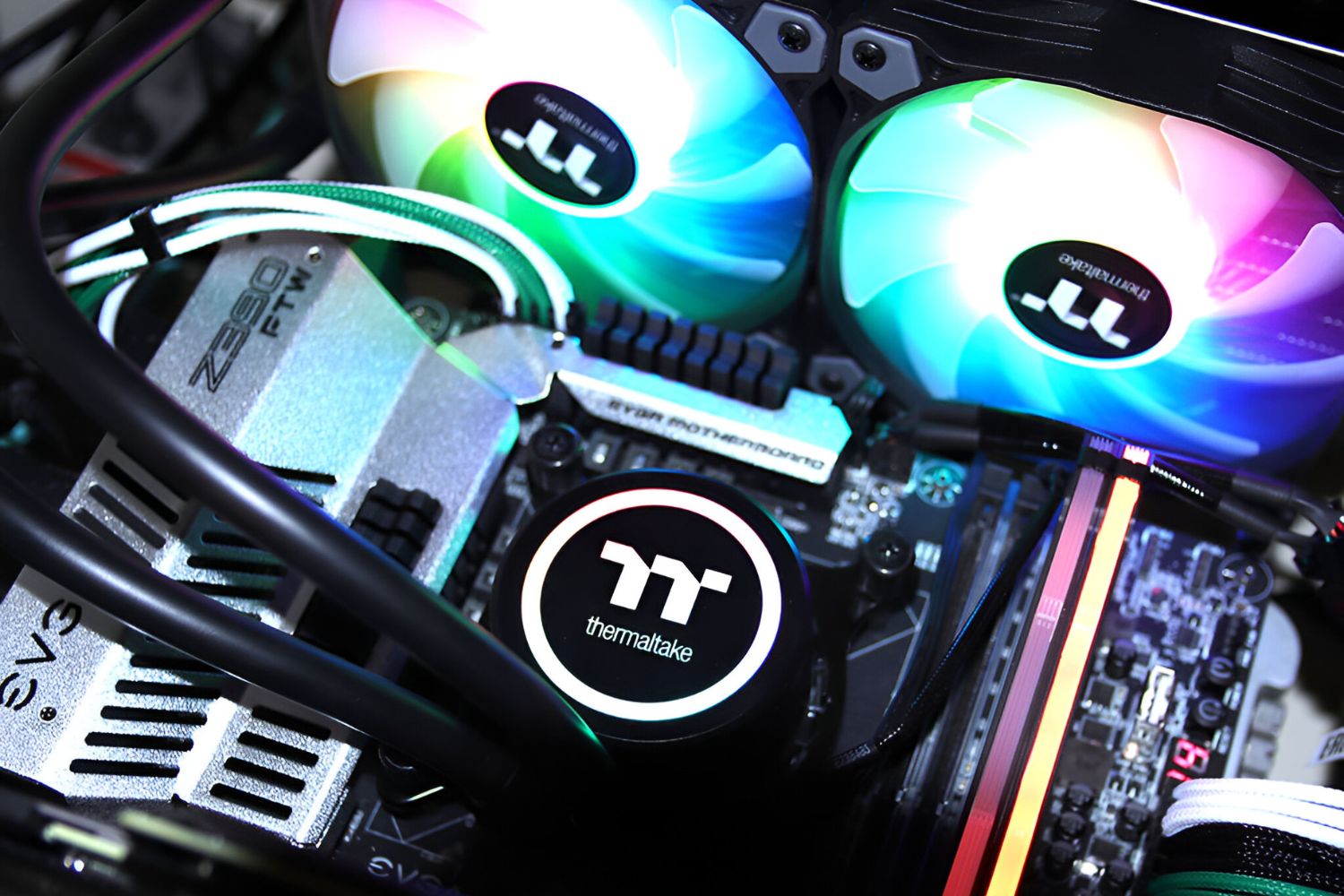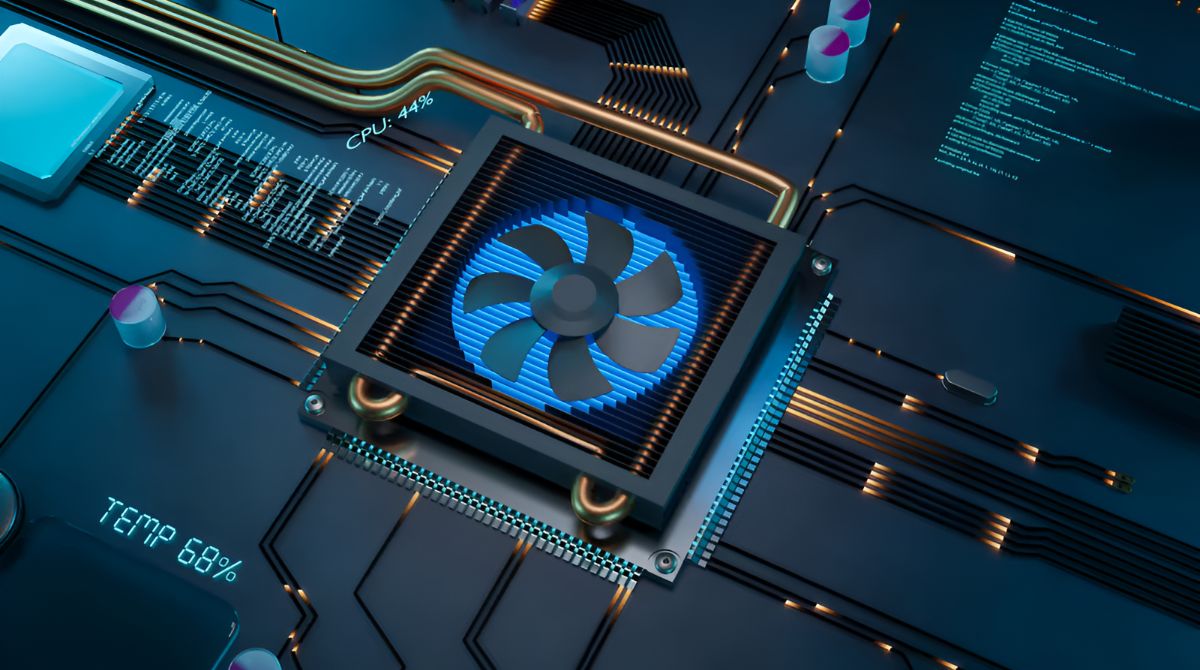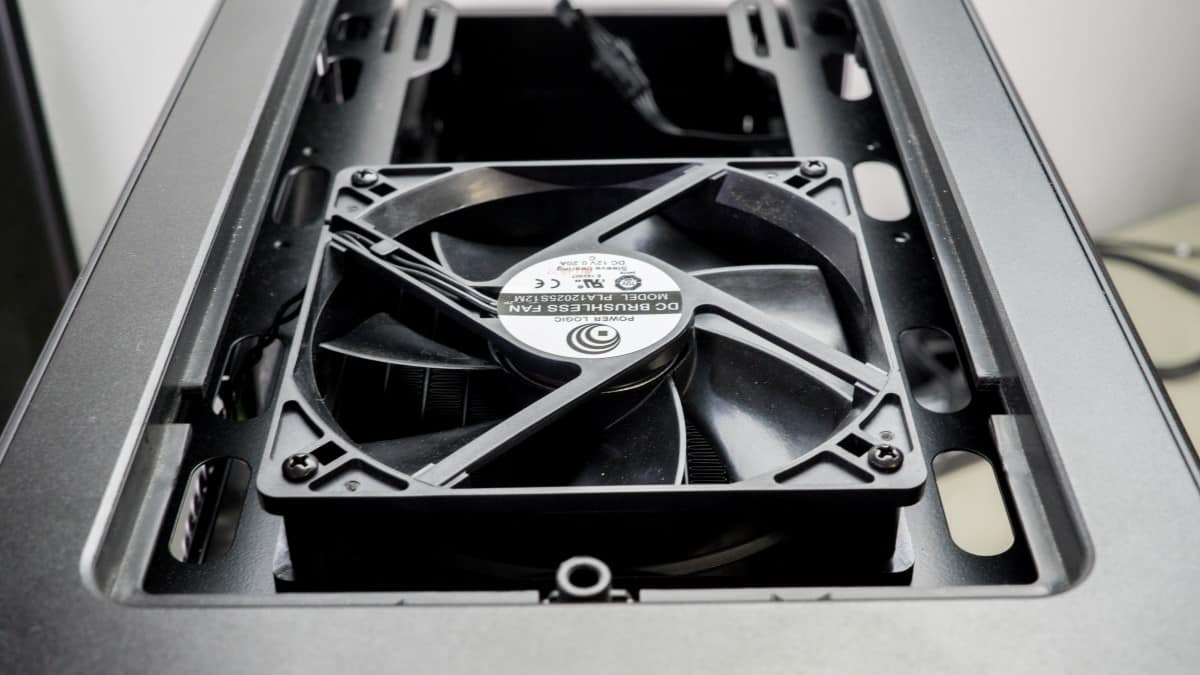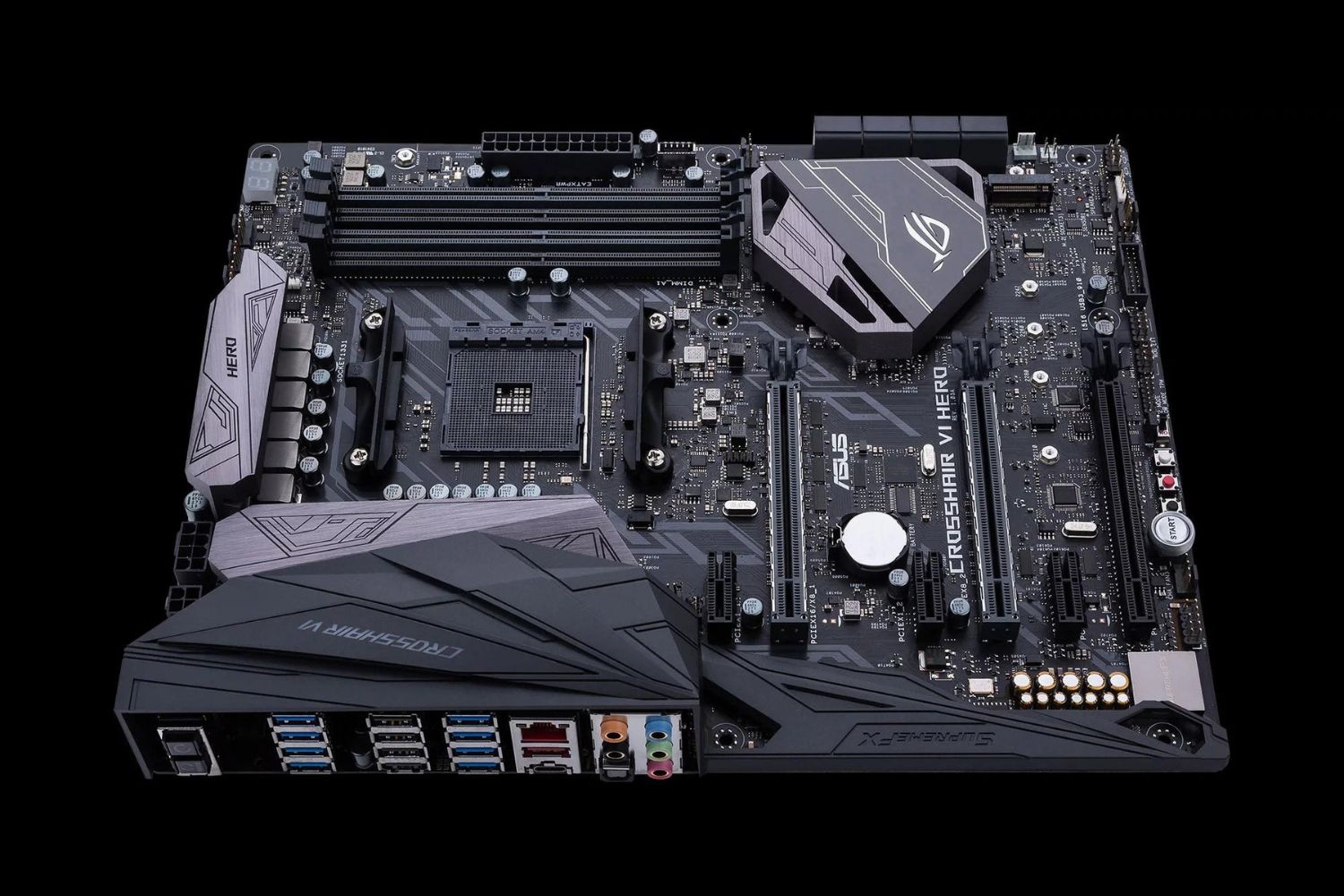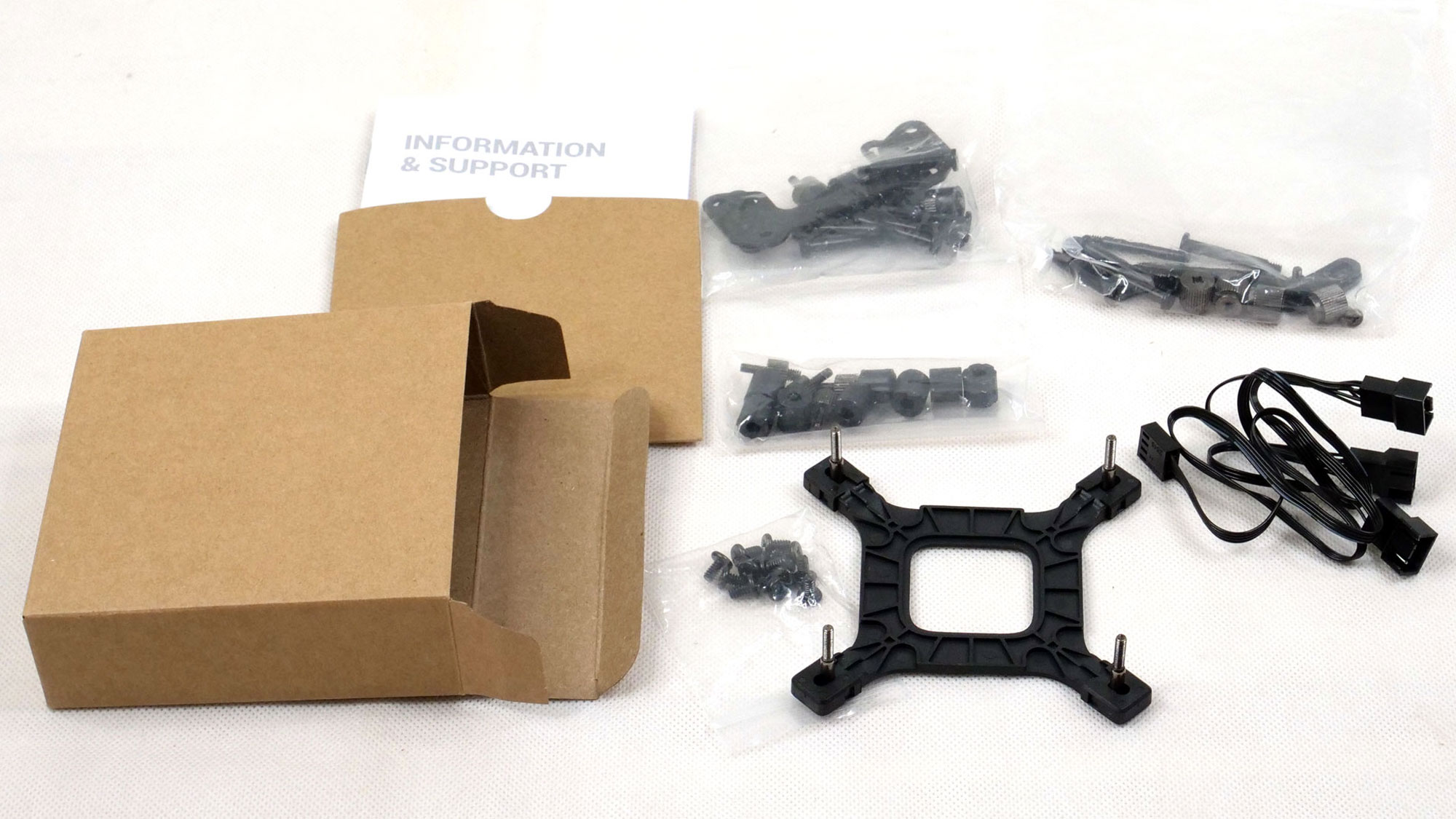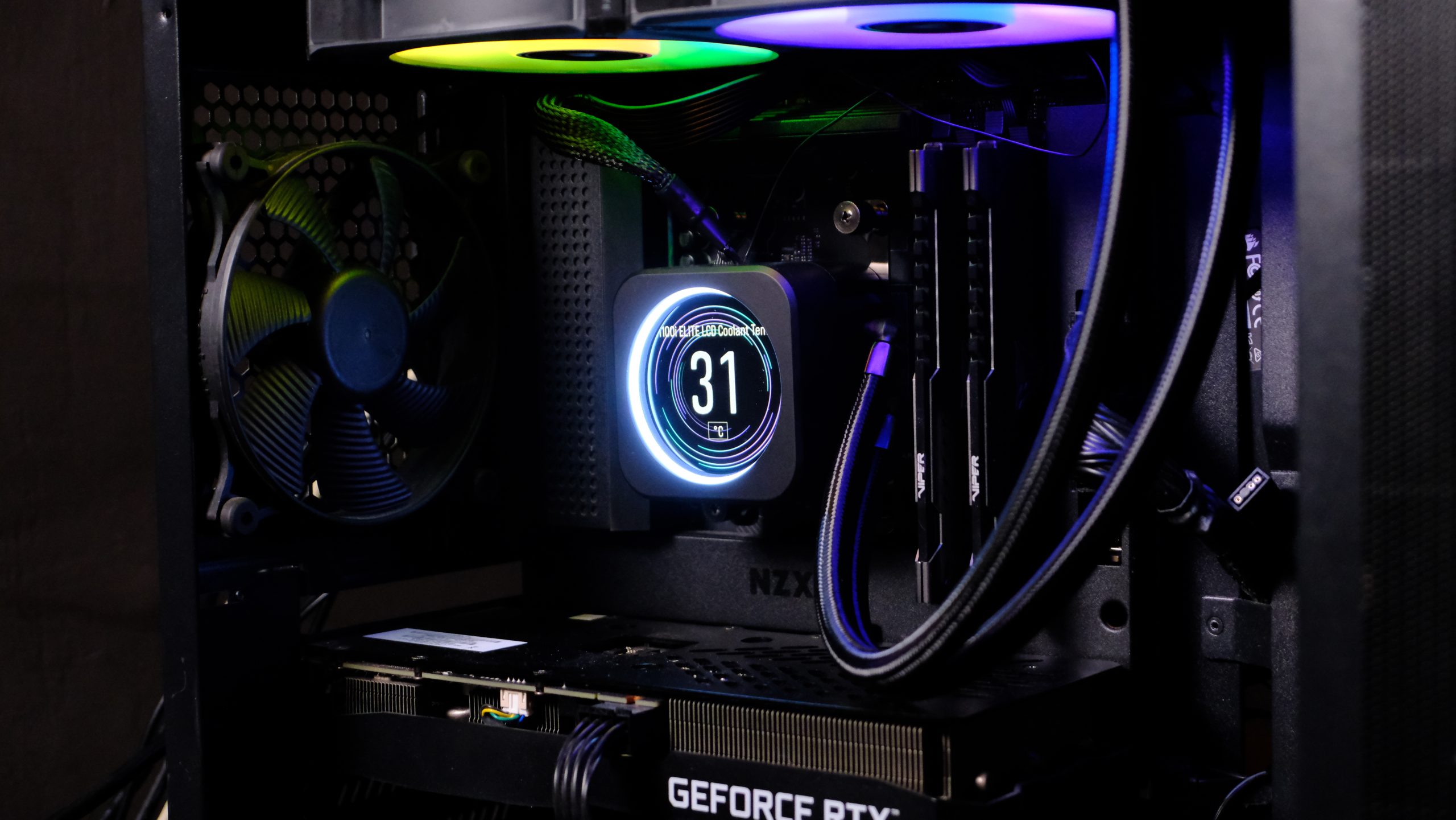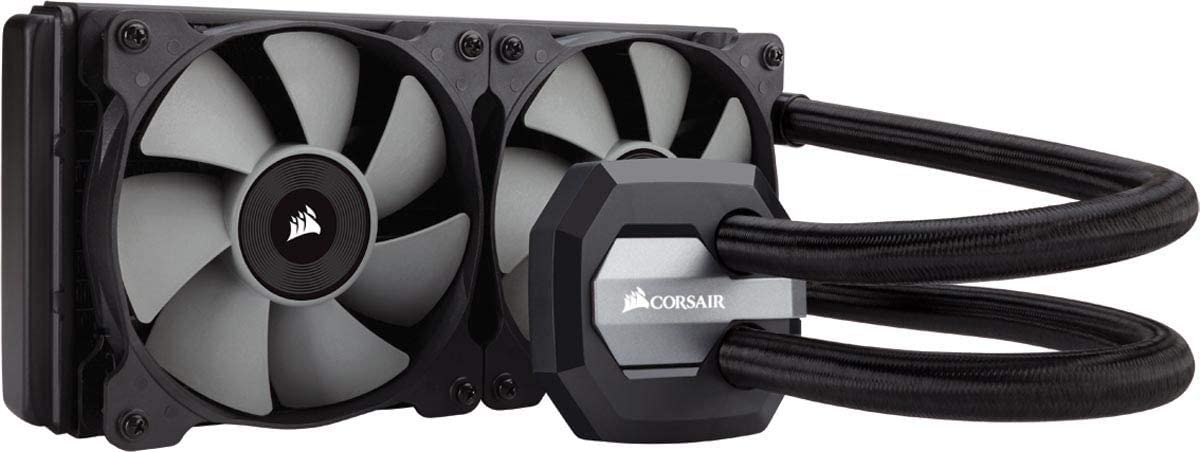Introduction
A CPU cooler plays a crucial role in maintaining the optimal operating temperature of a computer’s central processing unit (CPU). Without a properly functioning CPU cooler, the CPU can overheat, leading to reduced performance and potential damage to the hardware. One important aspect of a CPU cooler is its speed, as it directly affects how efficiently it can dissipate heat and keep the CPU cool.
In this article, we will explore the importance of CPU cooler speed and discuss the factors that can impact it. We will also provide insights on why having an optimal CPU cooler speed is essential for the overall performance and longevity of your computer. Additionally, we will offer practical tips on adjusting the CPU cooler speed and address common issues that users may encounter in relation to this aspect of cooling their CPU.
Whether you are a gaming enthusiast looking to overclock your CPU for better performance or a computer user who wants to ensure their system runs smoothly under heavy workload, understanding the importance of CPU cooler speed is vital for maintaining the health and stability of your computer.
So, let’s delve into the world of CPU coolers and discover how the speed at which they operate can significantly impact the overall performance and reliability of your computer.
What is a CPU Cooler?
A CPU cooler is a hardware component designed to dissipate heat generated by the central processing unit (CPU) of a computer. As the CPU performs calculations and processes data, it produces significant amounts of heat. If this heat is not effectively removed, it can lead to thermal throttling, reduced performance, and even permanent damage to the CPU.
The CPU cooler consists of various components, including a heatsink, heat pipes, fans, and thermal paste. The heatsink is usually made of aluminum or copper and is responsible for absorbing and spreading the heat generated by the CPU. Heat pipes, which are generally filled with a heat-conductive fluid, help transfer the heat from the CPU to the heatsink more efficiently.
The fans in the CPU cooler play a vital role in dissipating the heat. They draw cool air from the surrounding environment and blow it onto the heatsink, facilitating the heat exchange process. Some CPU coolers even feature multiple fans or advanced fan designs, such as liquid coolers, to achieve better cooling performance.
Thermal paste is another important component in a CPU cooler. It is applied between the CPU and the heatsink to ensure optimal heat transfer. The thermal paste fills microscopic gaps and imperfections on the CPU surface, allowing for better conductivity and heat dissipation.
There are various types of CPU coolers available, including air coolers and liquid coolers. Air coolers are the most common and economical choice for cooling a CPU. They utilize a combination of heatsinks and fans to cool the CPU. Liquid coolers, on the other hand, use a closed-loop system with a pump, radiator, and liquid coolant to effectively dissipate heat. They are generally more expensive but offer superior cooling performance, especially for overclocked CPUs or high-end gaming systems.
In summary, a CPU cooler is an essential component in a computer system that helps manage the heat generated by the CPU. By efficiently dissipating this heat, a CPU cooler ensures the CPU operates at optimal temperatures, maintaining performance and preventing potential damage.
Importance of CPU Cooler Speed
The speed at which a CPU cooler operates plays a crucial role in maintaining the optimal temperature of the central processing unit (CPU) in a computer. Keeping the CPU cool is essential for several reasons.
Firstly, a CPU that operates at high temperatures can experience thermal throttling. When the temperature exceeds a certain threshold, the CPU automatically reduces its clock speed to prevent overheating. This results in decreased performance and slower processing speeds, negatively impacting the overall user experience. By maintaining an optimal CPU cooler speed, you can prevent thermal throttling and ensure consistent and reliable performance.
Secondly, excessive heat can decrease the lifespan of the CPU and other sensitive components in your computer. Prolonged exposure to high temperatures can cause heat-induced stress on the hardware, potentially leading to premature failure. An efficiently functioning CPU cooler that operates at an appropriate speed can help extend the longevity of your computer system and save you from costly hardware replacements.
Furthermore, if you are an enthusiast or a gamer who pushes their system to its limits, such as overclocking the CPU for increased performance, having an effective CPU cooler becomes even more crucial. Overclocking generates additional heat, and without a properly functioning cooler, the CPU can quickly reach temperatures that are beyond safe operating limits. By adjusting the CPU cooler speed appropriately, you can ensure adequate heat dissipation and maintain a stable overclocked system.
Another important consideration is noise. The CPU cooler’s fan speed can directly impact the noise level of your computer. Higher fan speeds often result in louder operation. However, many modern CPU coolers feature fan control options that allow you to adjust the speed based on your preference or specific requirements. Striking a balance between cooling performance and noise levels is essential to create a quieter and more comfortable computing environment.
In summary, CPU cooler speed is vital for maintaining optimal CPU temperatures, preventing thermal throttling, extending hardware lifespan, and enabling stable overclocking. It is essential to find the right balance between cooling performance, noise levels, and energy efficiency to ensure that your computer operates at its best while maintaining a reliable and cooler environment for your CPU and other components.
Factors Affecting CPU Cooler Speed
The speed at which a CPU cooler operates can be influenced by various factors. Understanding these factors can help you optimize cooling performance and maintain the temperature of your central processing unit (CPU) at optimal levels.
1. CPU Cooler Design: The design and construction of the CPU cooler itself can affect its speed. Factors such as the size and design of the heatsink, the number and arrangement of heat pipes, and the type and number of fans can all impact the cooling efficiency and speed of the cooler.
2. CPU Cooler Fan Speed Control: Many modern CPU coolers come equipped with fan speed control options. These controls allow you to adjust the fan speed manually or automatically based on the CPU temperature. By adjusting the fan speed, you can optimize the balance between cooling performance and noise levels.
3. Ambient Temperature: The ambient temperature of the room in which your computer is located can affect the cooling performance of the CPU cooler. Higher ambient temperatures make it more challenging for the cooler to dissipate heat effectively, resulting in potentially higher CPU temperatures.
4. CPU Load: The workload on the CPU, such as running intensive tasks or applications, can impact CPU temperature. Higher CPU loads generate more heat, requiring the CPU cooler to operate at a higher speed to dissipate this heat efficiently.
5. Overclocking: Overclocking, which involves running the CPU at a higher clock speed than its default setting, can generate significantly more heat. When overclocking, it is crucial to ensure that the CPU cooler can handle the increased heat output. Adjusting the CPU cooler speed appropriately is essential to maintain stable temperatures.
6. Dust Accumulation: Over time, dust and debris can accumulate on the heatsink and fans of the CPU cooler, reducing its cooling efficiency. Regularly cleaning and maintaining the CPU cooler can help optimize its speed and overall cooling performance.
7. Power Management Settings: In some cases, power management settings in the computer’s BIOS or operating system may affect the CPU cooler speed. It is important to check and adjust these settings to ensure the CPU cooler operates optimally.
By considering these factors and taking appropriate measures, you can optimize the speed and performance of your CPU cooler, thus maintaining lower CPU temperatures and ensuring the stability and longevity of your computer system.
Optimal CPU Cooler Speed
Determining the optimal speed for your CPU cooler involves finding the perfect balance between cooling performance, noise levels, and energy efficiency. The specific optimal speed may vary depending on factors such as the CPU model, workload, and personal preferences. However, there are a few general guidelines to consider when adjusting your CPU cooler speed.
1. Temperature Monitoring: Monitoring your CPU temperature is crucial to finding the optimal speed for your CPU cooler. Utilize software tools or BIOS settings to monitor the temperature levels during different tasks and workload scenarios. This will help you gauge whether the current CPU cooler speed provides adequate cooling or if adjustments are needed.
2. Noise Considerations: The CPU cooler fan speed directly affects the noise level of your computer. It is important to find a balance between cooling performance and noise output. Lowering the fan speed can reduce noise, but it may also lead to higher CPU temperatures. Experiment with different fan speed settings to determine the optimal balance for your needs.
3. Automatic Fan Control: Many CPU coolers offer automatic fan control based on CPU temperature. This feature adjusts the fan speed dynamically to keep the CPU within optimal temperature ranges. Enabling this feature can provide efficient cooling while minimizing manual adjustments.
4. Overclocking Considerations: If you are overclocking your CPU, it is crucial to adjust the CPU cooler speed accordingly. Overclocking generates additional heat, and the CPU cooler speed should be increased to cope with the higher thermal output. Failure to address this can result in unstable overclocks and potential damage to the CPU.
5. Cleaning and Maintenance: Regularly cleaning and maintaining your CPU cooler is essential for optimal performance. Dust accumulation on the heatsink and fans can impede airflow, reducing the cooling efficiency of the cooler. Ensure that the cooler is free of debris and perform regular cleanings to maintain optimal performance.
6. Expert Recommendations: Consult manufacturer guidelines or seek advice from experienced users or professionals who have expertise in CPU coolers. They can provide specific recommendations based on your CPU and cooling requirements.
It’s important to note that finding the optimal CPU cooler speed may involve some trial and error. Monitor temperature levels, observe noise output, and make adjustments accordingly. Collaborating with reliable resources can help you make informed decisions tailored to your specific system and needs.
How to Adjust CPU Cooler Speed
Adjusting the speed of your CPU cooler can help optimize cooling performance and maintain the temperature of your central processing unit (CPU) at ideal levels. The specific method for adjusting CPU cooler speed may vary depending on your hardware and software configurations. Here are a few common ways to adjust CPU cooler speed:
1. BIOS Settings: Accessing the BIOS (Basic Input/Output System) of your computer provides direct control over various hardware components, including the CPU cooler. Different BIOS interfaces may have slightly varying options, but look for settings related to fan control or system monitoring. Here, you can adjust the fan speed control settings to increase or decrease the CPU cooler speed.
2. Manufacturer Software: In some cases, the manufacturer of your CPU cooler may provide dedicated software that allows you to control the fan speed and monitor CPU temperature. Download and install the software from the manufacturer’s website, and use it to adjust the CPU cooler speed to your preference.
3. Third-party Software: Alternatively, you can utilize third-party software tools to adjust the CPU cooler speed. There are several free and paid applications available that offer fan control functionality, allowing you to modify the fan speed based on CPU temperature. Do thorough research to find a reputable and compatible software solution for your system.
4. Hardware Fan Controllers: If your CPU cooler or computer case has built-in fan controller hardware, you can use the physical control knobs or switches to adjust the fan speed manually. These controllers are typically located on the front panel or top of the case, providing easy access for quick adjustments.
5. Fan Speed Adapter: Some CPU coolers come with adapters that allow you to modify the fan speed by changing the voltage supplied to the fan. These adapters, often called resistors, are connected between the fan and the power source, allowing you to slow down the fan speed by reducing the voltage.
When adjusting the CPU cooler speed, it is essential to carefully monitor CPU temperatures. Make gradual changes and observe the impact on cooling performance and noise levels. Continuously monitor the CPU temperature to ensure it remains within safe operating limits.
It’s important to note that not all CPU coolers or computer systems may offer extensive control over fan speed. Some may only have limited options or rely on automatic fan control based on CPU temperature. Nevertheless, exploring the available options and finding the best compromise between cooling performance and noise output is key to optimizing your CPU cooler speed.
Common Issues with CPU Cooler Speed
While CPU coolers are essential for maintaining the optimal temperature of your central processing unit (CPU), there can be some common issues related to their speed and performance. Understanding these issues can help you troubleshoot and resolve them effectively. Here are some common problems encountered with CPU cooler speed:
1. Inadequate cooling: One common issue is when the CPU cooler speed is insufficient to keep the CPU within safe temperature limits. This can result in high CPU temperatures, leading to performance degradation and potential damage to the CPU in the long run. Inadequate cooling can occur due to factors such as a malfunctioning fan, improper fan speed settings, or inadequate airflow caused by dust accumulation on the heatsink and fans.
2. Excessive noise: Another issue that users may encounter with CPU cooler speed is excessive noise. When the CPU cooler fan operates at high speeds, it can generate considerable noise, which may interfere with a quiet and comfortable computing environment. This problem can be especially noticeable when the fan speed is not properly controlled or configured. Adjusting the CPU cooler speed and optimizing fan control settings can help mitigate noise-related issues.
3. Incorrect fan speed control: Sometimes, the CPU cooler fan speed may not respond correctly to changes in CPU temperature or may not be properly controlled at all. This can result from outdated BIOS settings, incompatible software configurations, or malfunctioning hardware components. Ensuring that the appropriate fan speed control settings are enabled and using up-to-date software and drivers can help resolve this issue.
4. Overheating during overclocking: Overclocking the CPU can lead to increased heat output, requiring a faster CPU cooler speed to dissipate the additional heat. If the CPU cooler speed is not adjusted accordingly, the CPU may overheat, causing instability or even system crashes. It is crucial to monitor CPU temperatures and adjust CPU cooler speed appropriately when overclocking your CPU.
5. Inefficient airflow: In some cases, CPU cooler speed may not be the issue itself, but rather the overall airflow in the computer. Poor airflow within the case can impede the cooler’s ability to dissipate heat effectively. Ensuring proper cable management, dusting regularly, and optimizing the positioning of fans and other cooling components can help improve overall airflow, enhancing the CPU cooler’s performance.
6. Compatibility issues: CPU coolers come in various sizes and designs, and compatibility with computer cases and other components can sometimes be a problem. For instance, larger CPU coolers may not fit in smaller computer cases, or the cooler may interfere with other components like RAM modules. Prior to purchasing a CPU cooler, ensure compatibility with your specific system to avoid any issues with installation or performance.
When encountering issues with CPU cooler speed, it is recommended to refer to the manufacturer’s documentation, perform troubleshooting steps, and seek assistance from professional sources if needed. Ensuring proper CPU cooler speed and performance is crucial for maintaining the stability and longevity of your computer system.
Conclusion
The speed at which a CPU cooler operates is a critical factor in maintaining optimal CPU temperatures and ensuring the performance and longevity of your computer system. By understanding the importance of CPU cooler speed and the factors that can affect it, you can make informed decisions to optimize cooling performance.
A CPU cooler is an essential component that dissipates the heat generated by the CPU, preventing thermal throttling and potential damage to the hardware. It consists of various components, including heatsinks, fans, and thermal paste, all working together to maintain adequate cooling.
Factors such as CPU cooler design, ambient temperature, CPU load, and overclocking can influence the CPU cooler speed. It is important to find the optimal balance between cooling performance, noise levels, and energy efficiency for your specific needs.
Adjusting CPU cooler speed can be done through BIOS settings, manufacturer software, third-party software, hardware fan controllers, or fan speed adapters. Regular monitoring of CPU temperatures and maintenance of the CPU cooler, such as cleaning out dust and debris, are also essential for optimal performance.
Common issues with CPU cooler speed include inadequate cooling, excessive noise, incorrect fan speed control, overheating during overclocking, inefficient airflow, and compatibility issues. Identifying and addressing these issues promptly can help maintain a stable and efficient cooling system.
In conclusion, the speed at which your CPU cooler operates plays a crucial role in maintaining the health and performance of your computer system. By ensuring the optimal CPU cooler speed, you can prevent overheating, enhance performance, and prolong the lifespan of your CPU and other hardware components. Regular maintenance and attention to temperature monitoring will help you maintain an optimal computer environment and ensure a smooth computing experience.







